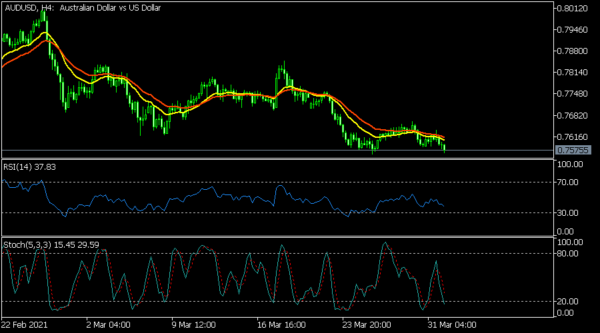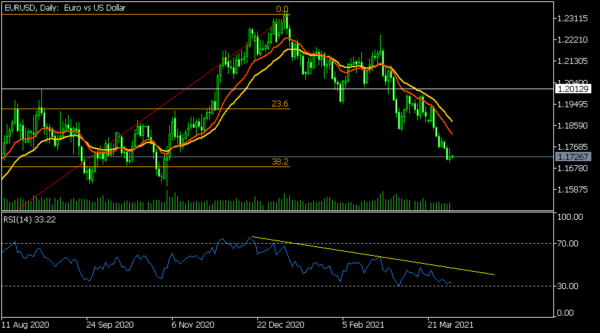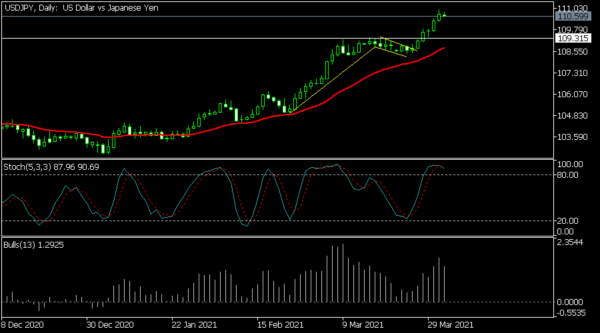The US dollar strengthened after Joe Biden unveiled a $2 trillion infrastructure plan. The plan will include $100 billion to upgrade America’s electricity grid, $180 billion for research and development (R&D), and more than $621 billion to address the country’s transport infrastructure. Broadband and jobs training will cost more than $200 billion. This plan will be funded by raising corporate taxes, hiking the minimum wage, repealing tax loopholes for intangible income, and ending fossil fuel tax breaks. Supporters of the measures argue that it will lead to a longer sustainable growth while opponents say tax hikes will make the economy less competitive,
The Japanese yen remained under pressure even after relatively positive economic numbers from the country. According to the Bank of Japan, the Tankan small manufacturing index rose from -27 in the fourth quarter to -13 in Q1. The large non-manufacturing index rose from -5 to -1 while the big manufacturing outlook index rose from -8 to 4. Further data by Markit revealed that the country’s manufacturing PMI increased from 52.0 to 52.7 in March; a sign that economic recovery was taking shape.
The Australian dollar is hovering near its lowest level this year after strong data from the country. According to Markit, the manufacturing PMI declined from 56.9 in February to 56.8 in March. This happened as demand for the country’s products and optimism for the future rose. Further data revealed that the country’s retail sales declined by 0.8% in February after rising by 0.5% in the previous month. Analysts were expecting a decline of 1.1%. Meanwhile, in China, Australia’s biggest trading partner, the Caixin manufacturing PMI declined slightly from 50.9 to 50.6.
EUR/USD
The EUR/USD pair declined to a multi-month low of 1.1720 because of the stronger US dollar. On the daily chart, the pair also moved below the important support level at 1.2012 and the short and longer-term moving averages. The Relative Strength Index (RSI) has also continued to decline while the price is targeting the 38.2% retracement level. Therefore, the pair may keep falling as bears target the next support at 1.1700.
USD/JPY
The USD/JPY price has jumped to the highest level since April 9. On the daily chart, the price moved above the short and longer-term moving averages. It has risen above the previous bullish flag pattern while the Stochastic Oscillator has moved above the overbought level. Also, the bulls power indicator has continued to rise. Therefore, the pair may keep rising in April as the dollar strength continues.
AUD/USD
The AUD/USD pair declined to an intraday low of 0.7570, which was the lowest level since March 24. On the four-hour chart, the pair has formed a double-bottom pattern and is slightly below the moving averages. The RSI is slightly above the oversold level while the Stochastic oscillator has moved to the oversold level. Therefore, while the pair may keep falling, a rebound is also possible because of the double-bottom pattern.














